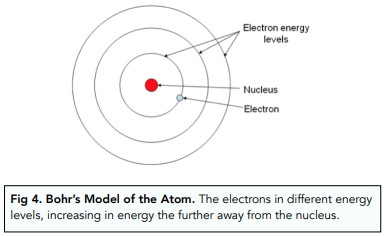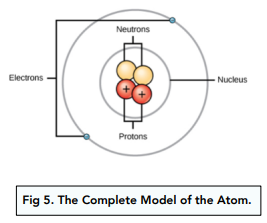Development of the Atomic Model Part 2 (GCSE Physics)
Development of the Atomic Model Part 2
Niels Bohr
- Niels Bohr changed the nuclear model. Soon after the nuclear model was proposed, Niels Bohr adapted the model of the atom. He looked more closely at the structure of the atom, particularly the electrons.
- Bohr was looking at orbiting distances. The nuclear model has already proposed that electrons were orbiting around a small positive nucleus, but Bohr wanted to know how they were orbiting. Through various experiments, he found that each electron was orbiting the nucleus at a specific distance.

Protons
- The nucleus was made up of smaller particles. Soon after Bohr’s theory, other scientists began to look at the nucleus. Through their experiments, they found that the nucleus was actually made up of smaller particles.
- The small particles were charged. The small particles in the nucleus were found the charged. Each of the particles had a positive charge of +1. These positive particles were called protons.
- Protons determined nuclear charge. Through working out the charge of a proton, scientists knew that they could work out the charge of the nucleus. To find the overall nuclear charge, the scientists simply had to add up the charges of all the protons in the nucleus of an atom.
James Chadwick
- James Chadwick improved the nuclear model. About 20 years after the nuclear model was an accepted idea, Chadwick adapted the nuclear model again. He was also looking at the structure of the nucleus.
- Chadwick investigated neutrons. Chadwick was particularly interested in small particles called neutrons within the nucleus. The nuclear model at the time explained that the protons and electrons balanced out charges, but it left the atomic and mass numbers unaccounted for.
- Neutrons completed the nuclear model. Through his discovery of neutrons, James Chadwick completed the nuclear model, making it the model that we use today. Neutrons were found to be uncharged particles, but they had the same mass as protons. Now, the charges and masses were all accounted for.

Changing Scientific Models
As we have seen in this section, the nuclear model was constantly changed and adapted by different scientists. Rutherford’s particle scattering experiment was particularly revolutionary, since it brought about the first idea of a nuclear model rather than a ‘plum pudding’ model.
In the future, our current scientific models could be changed or replaced depending on new experimental evidence.





Still got a question? Leave a comment
Leave a comment